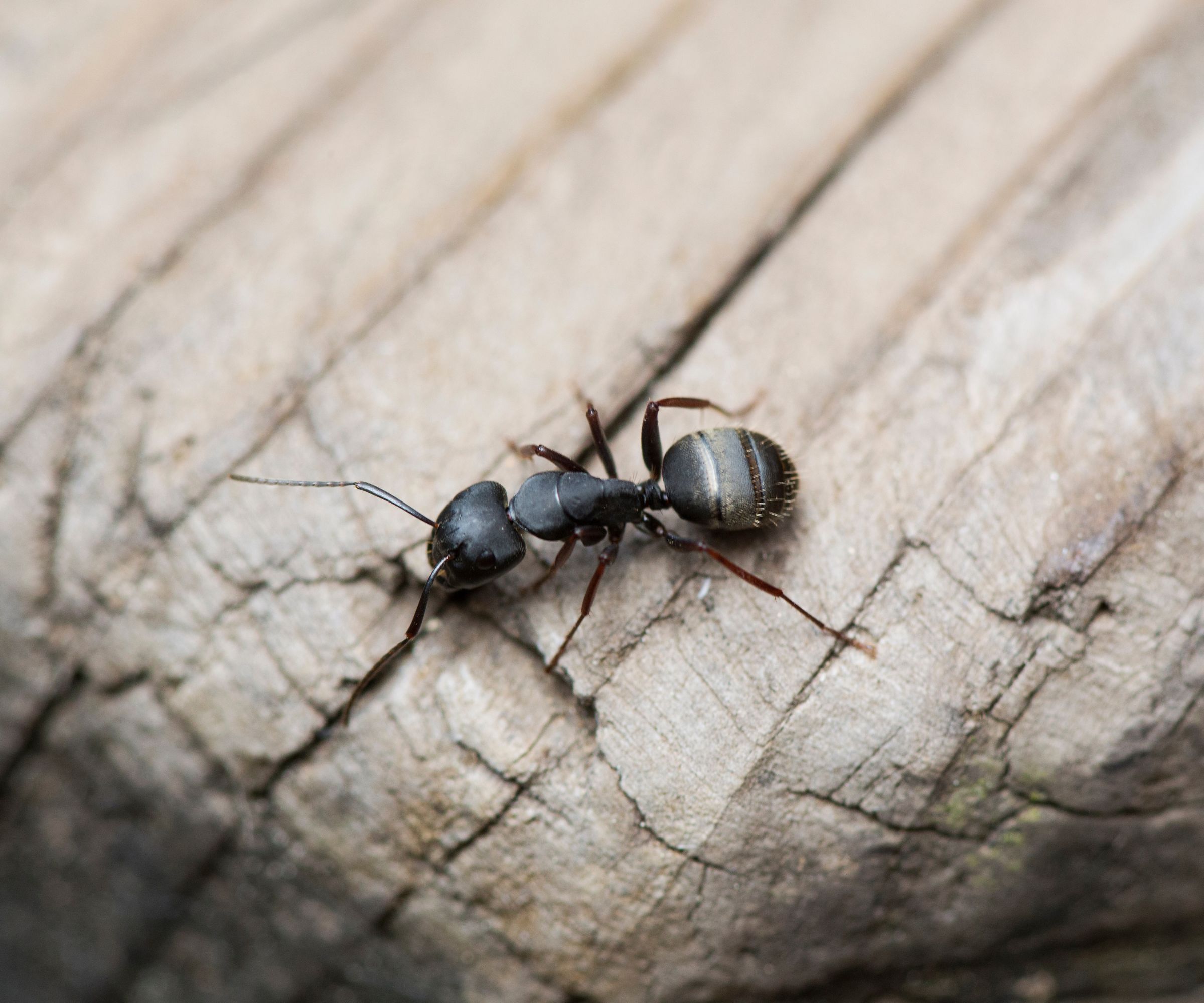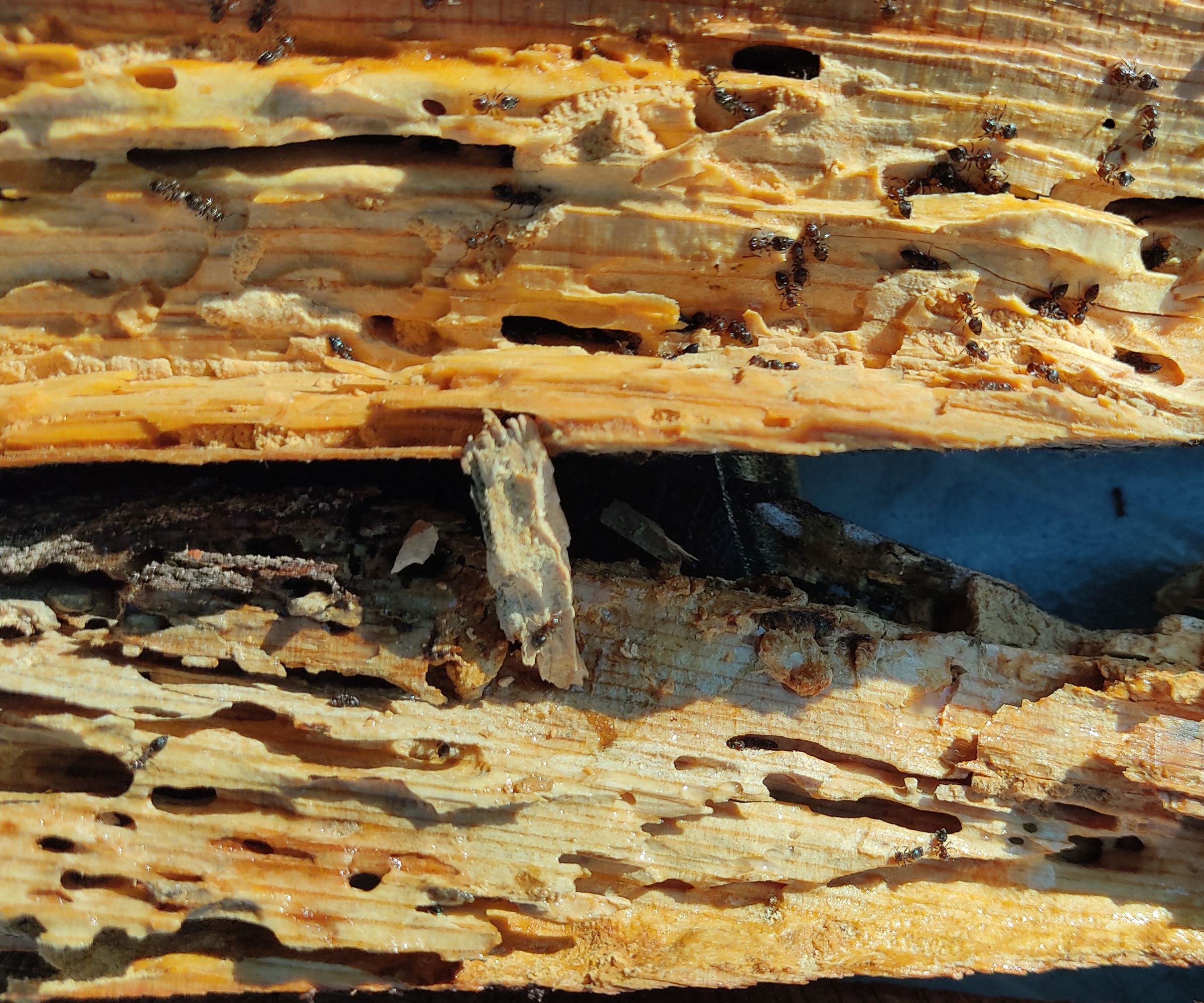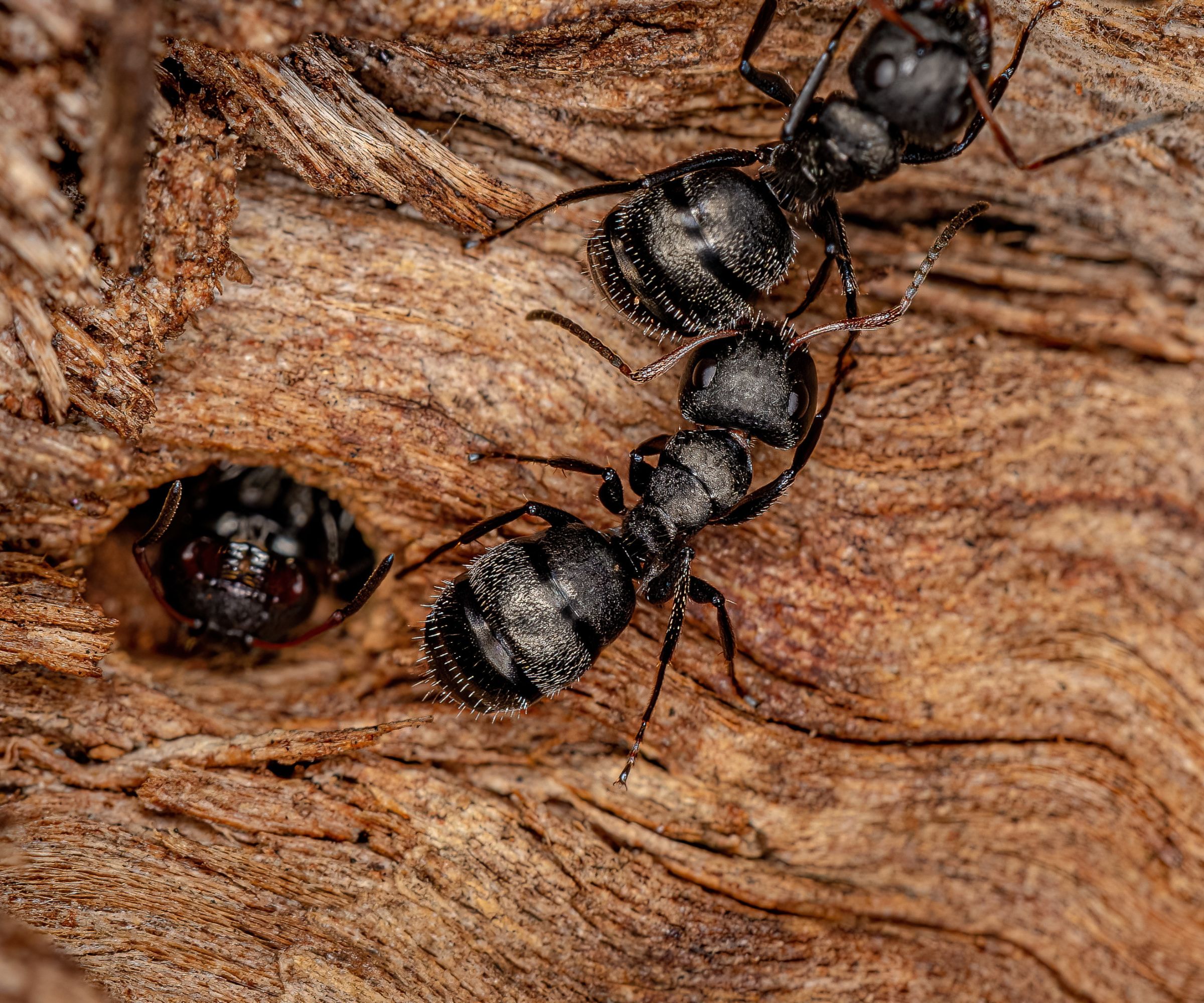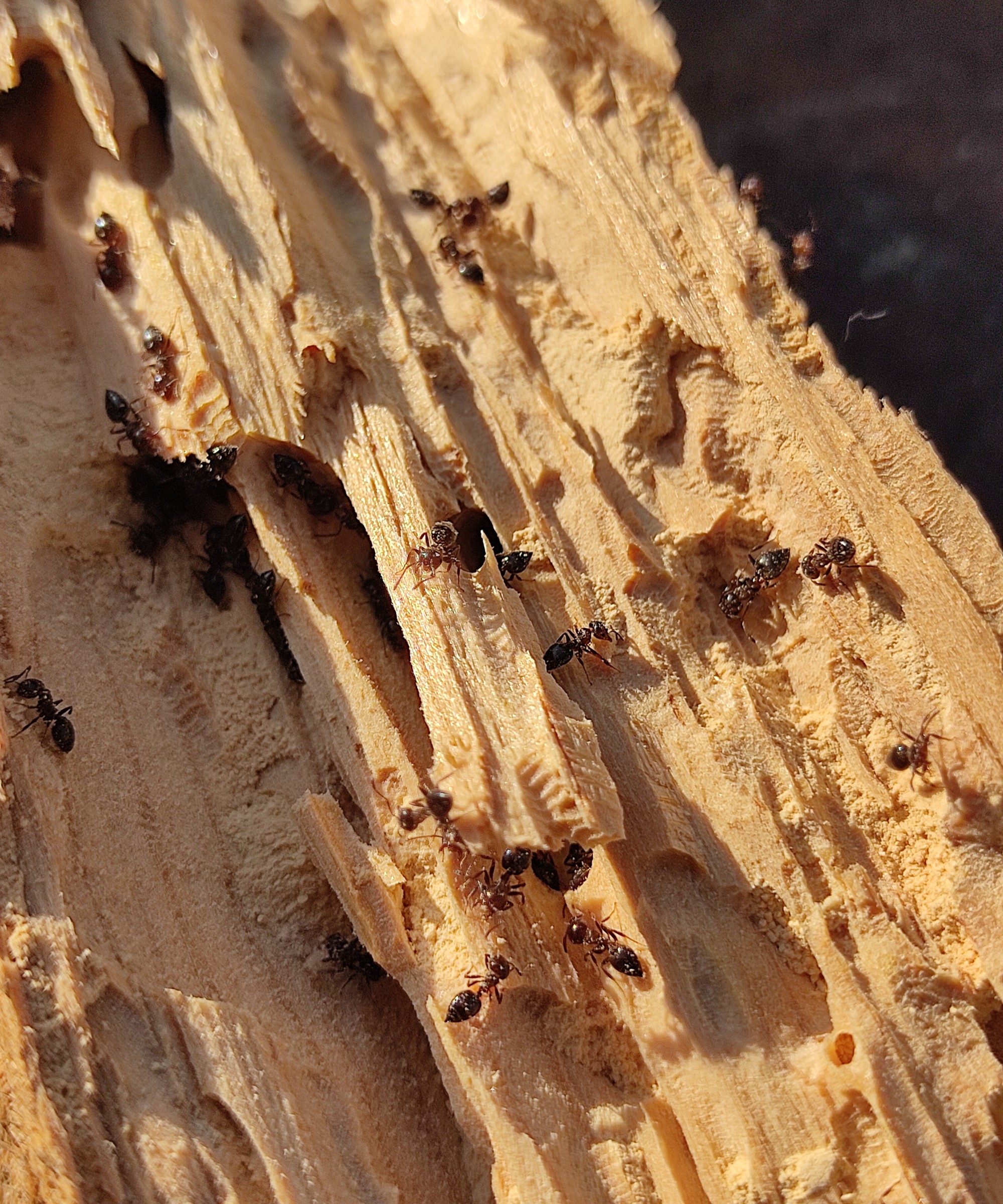How to get rid of carpenter ants – expert-approved tips to eliminate them from your home for good
These tiny, wood-tunneling pesky pests can cause serious structural issues if they invade your home – here's how to get rid of them successfully


Have carpenter ants taken up residence in your home? If so, it is important to act fast and learn how to get rid of them properly.
While these insects may be small and harmless to humans, they can cause significant damage around your home. In fact, carpenter ants are one of the most structurally damaging pests in the US despite their tiny size – they can hollow out wooden beams, infest walls, and erode the structural integrity of your home.
As one of the most common indoor pests, you probably know how to deal with ants in your home, but the severity and risk of damage caused by notorious carpenter ants means you must proceed with urgency and caution. We spoke to our pest control experts and entomologists, for their tips on identifying and handling an invasion.
How to get rid of carpenter ants
1. Identify carpenter ants correctly

The step in dealing with carpenter ants is identifying that they are definitely what you are dealing with, as different species of ants require different solutions.
'Of the 50 or so carpenter ant species in North America, several are famous for their chronic tunneling and weakening of wooden structures in residential areas, outbuildings, and wooden utility poles, as well as making forest trees susceptible to windfalls,' says Dr. Tracy Ellis, award-winning entomologist at FarmSense.
'In terms of the greatest economic impact to structures, the notorious Camponotus takes the title for its voracious tunneling into wooden structures,' Dr Ellis adds. It's this species that includes the widespread carpenter ant.
Camponotus pennsylvanicus is common in the Northeast, East and Midwest, while the yellowish red and black Florida carpenter ant, the Camponotus floridanus, is found in the Southeast. The Camponotus moduc is found in the Northeast and West, identifiable by its red and black legs.
'Another one of the major ways to tell the differences between termites and carpenter ants is that carpenter ants grab wood pieces and throw them out, while termites eat the wood,' says Matt Smith from Green Pest Management, who has worked in the pest control industry for 14 years.
'Carpenter ants are large, wood-digging ants. They don't eat wood like termites do. Instead, they tunnel through wooden structures to construct their nests,' explains Georgios Liakopoulos from Fantastic Pest Control. 'Infestations of carpenter ants need to be dealt with right away to avoid structural damage.'
Carpenter ants are social insects, similar to bees, that typically scavenge, forage and feed young to maintain the colony, explains Dr Ellis. 'They can be distinguished from termites by their wasp-like thin waist and elbowed antennae,' she says. 'In addition to damaging wood by excavation of tunnels for nests, they are also considered a nuisance like other ants by their annoying habit of gathering in homes and structures to eat any sugary human food or greasy leftovers.'
Look out for small piles of powdery wood, wood shavings or small pellets (roughly the size of a nickel or dollar) around or inside wood structures, such as door frames and fireplaces. 'Remnant piles of carpenter ant excavations are characterized as being like coarse sawdust from a chainsaw and will be mixed with ant excrement and leftover food particles,' adds Ellis, and listen out for rustling sounds coming from inside a wall or wooden structure, particularly at night.
2. Locate the nest and determine the extent of the infestation

'Once you have identified it is carpenter ants you are dealing with, to tackle the problem, you have to locate the nest – which will always be in wood,' says Jeremy Yamaguchi, the CEO of Lawn Love. 'They love moist and decaying wood, so any damp spot is a prime target. But that doesn’t mean they can’t nest in dry wood. If you see a line of carpenter ants foraging in your home or yard, you may be able to follow them to the nest.'
Carpenter ants build satellite colonies when they run out of resources in their main one so keeping an eye on, and removing external colonies will also help protect your home.
'Following an ant trail back to the opening to the void the nest is in may lead you to the nest,' suggests Marc Potzler, board-certified entomologist with Ehrlich Pest Control. However, he warns that some ants enter a home through the foundation before moving to the attic to create their nest, so this is not always an accurate method.
'Once close to the nest, you can hear the ants moving around inside the void, The sound resembles crinkling cellophane. A moisture meter, such as the Mecurate Digital Pin Type Wood Moisture Meter available at Amazon, used by many professionals, will help further narrow down exactly where the nest is inside the void,' he adds. You'll likely find nests around common construction errors that encourage leaks over time (such as a chimney).
Next, it's important to assess the extent of the infestation to ensure you target all nests and determine the best method of extermination.
Potzler explains that carpenter ants live in a network of nests. 'They live in a parent colony, which is almost always outside, and satellite nests, located in a radius around the parent colony.
'The satellite nests act to expand the foraging range of the parent nest, and they are in frequent contact with the parent nest to share resources. If you want a permanent solution you have to keep in mind that they may have different nests, so be diligent in looking.
'There may be multiple satellite nests in one home. All of them, plus the parent colony, must be eliminated to end the infestation. Otherwise, the parent colony will send another group of workers to re-establish an exterminated satellite nest.'
3. Block entrances to small nests

If a smaller (satellite) nest site is found, Marc recommends directly applying an aerosol or dust into the void to eliminate it immediately.
Additionally, Melanie Rose, a trained pest control specialist from Nationwide Pest Control, suggests using a dust-based insecticide, such as the JT Eaton 365 Answer Boric Acid Insecticidal Dust available at Amazon, as it is strong enough to kill the pest for good without the use of harsh pesticides. 'These insecticides are helpful because they penetrate existing cracks in the interior walls of your home and other wall voids.'
You will also want to evaluate and, where needed, replace any damp or wet wood to eliminate nest hot spots completely. 'Evaluate wood where dampness or rot are prone to develop, such as areas where wood makes contact with the foundation, windows, or rain gutters,' says Ellis. 'Allow sufficient air circulation to prevent unwanted moisture retention to the attic, subfloors and the exterior of the home; seal and screen potential entry holes at vents where pipes and utilities permeate the structure and replace rotten wood.'
Potzler also suggests keeping doors and windows well caulked, to reduce the likelihood of ants being attracted to your home. We recommend the #1 bestselling DAP INC White Alex Plus Acrylic Latex Caulk with Silicone, as it is easy to apply and durable.
You should also remove any overhanging branches, decaying firewood, tree stumps and trees in the proximity of your home, which may be housing carpenter ants and attracting them to your home.
4. Use bait and pesticide to exterminate large nests

The most effective way to get rid of carpenter ants is a combination of bait and a pesticide. This method involves using a substance the ants find attractive to encourage them to come across the pesticide that's been put down, effectively helping to kill off the population.
We recommend using the Zevo Multi-Insect Killer available at Zevo, as it kills ants on contact, and is powered by corn mint and rosemary essential oils, making it safe to use around people and pets when used as directed.
Additionally, it's important to disrupt the ant trails to wherever they have nested to prevent the carpenter ants from returning. Ants communicate through pheromones, which are chemical signals they use to guide them to food sources and back to their nests. The more ants follow this trail, the stronger it becomes, and the more ants are likely to follow.
If you have found a much larger nest – these will often around several feet long – then you are likely dealing with a parent colony. These are harder to treat, but you can do so with baits – which you should place next to the ants’ observed trails (but not across the trail). The closer to the void opening the baits are placed, the better the results will be.
To do this, you can combine equal parts of borax, such as the Earthborn Elements Borax available at Walmart, and insecticide, such as the BASF PT 221L Pressurized Insecticide available at Amazon, with sugar or ant bait, to make a bait. Mix one cup of water, two cups of sugar and one tablespoon of borax, adding insecticide as instructed. The sugar will attract the ants, while the borax and insecticide will kill them.
'If you have a problem with carpenter ants every summer, it can be helpful to use this solution on problem areas in the spring because that can deter the ants and minimize the problem before it begins,' says Yamaguchi.
Ellis warns against using sprays on ant trails. 'They really do nothing but kill the ants you see,' she says. 'Deploy ant baits and other products, not sprays, that advertise “queen elimination.” Contact sprays only eliminate the ants you have sprayed, which is a very small portion of the colony.'
Carpenter ants can also be killed with a simple and very (very) easy homemade remedy – all you need is soap and water. To get rid of the ants naturally, simply mix water with a few drops of dish soap in an empty spray bottle, such as the Zep Professional Sprayer Bottle available at Amazon, and spray onto the affected area in your home. The solution is harmful and toxic to the carpenter ants so works a treat. You can also add a few drops of essential oil into the solution, such as the NaturoBliss 100% Pure Lemon Essential Oil available at Amazon, which is therapeutic grade and premium quality, as the strong smell will help to eliminate their scent trails.
5. Deter them with home remedies

Once you have tackled the ant infestation at its source, you will want to stop any other ants moving into your home. Implementing some deterrents can ensure ants aren't tempted to return to your property.
Putting down harmful pesticides may not be the best option for you since it can be harmful to pets, children, or even damage your furniture. So, if you want a more natural repellent for less severe infestations, these eco-friendly methods could do just the trick to keep carpenter ants out of your home for good.
- Diatomaceous earth: Diatomaceous earth can be used to gradually dehydrate and kill carpenter ants without posing risks to your plants or pets. 'This powder is a natural and safe insecticide made from the fossilized remains of tiny aquatic organisms,' adds Prerna Jain, owner of Ministry of Cleaning. 'Sprinkle a thin layer of diatomaceous earth around the perimeter of your home, especially in areas where they congregate. It creates a barrier that can help deter them from crossing.' We recommend the Earthborn Elements Diatomaceous Earth available at Amazon, as it's pure, undiluted and non-toxic.
- Cinammon: 'The strong smell of cinnamon repels ants, making it a great deterrent,' says Liakopoulos. 'Use cinnamon essential oil or ground cinnamon on ant trails and near entry points to deter them. 'You can even use this method to keep ants out of hummingbird feeders.
- Chalk line: While you may not want to go around drawing all over your walls and furniture, chalk lines can be a great way to disrupt the scent trail of ants due to their calcium carbonate content. Chalk lines can be drawn around ant entry points or areas where you notice ants walking.
- Bay leaves: To get rid of ants in the kitchen, you can place bay leaves in cabinets, pantry shelves, or areas where you have seen ants. Bay leaves have a strong scent that deters them, counteracting their attraction to the food stored in these places.
FAQs
Why do I have carpenter ants?
Carpenter ants will enter your home if they have the attraction of a food source. While their name may suggest they eat wood, it's crumbs, spillages and pet food that will attract them, so clean your kitchen regularly and keep food stored away in cabinets or pantries.
What smells do carpenter ants hate?
Essential oils are really effective in keeping carpenter ants at bay, as they can't abide the scent of peppermint, lemongrass, tea tree, lemon and orange oils. You can also use cayenne pepper or cloves as spices to deter common garden pests, which work to repel carpenter ants too, along with vinegar.
Dealing with an ant invasion in your kitchen? Learn how to get rid of them.
Sign up to the Homes & Gardens newsletter
Design expertise in your inbox – from inspiring decorating ideas and beautiful celebrity homes to practical gardening advice and shopping round-ups.

Ottilie joined Homes & Gardens last year, after finishing a Master's in Magazine Journalism at City, University of London. With previous contributions in Livingetc and Motorsport Magazine, she produces content for the Solved section on the website, focusing on clever tips and tricks to keep your home beautiful, organized and clean. She also has a Master's degree in English Literature and History of Art from the University of Edinburgh, where she developed a love for inspiring interiors and architecture.
- Lola HoultonNews writer
- Megan SlackHead of Celebrity Style News
-
 Martha Stewart's outdoor zoning method is the secret to seamless hosting for summer 2025 – it's changed how I arrange furniture on my patio
Martha Stewart's outdoor zoning method is the secret to seamless hosting for summer 2025 – it's changed how I arrange furniture on my patio11 years ago, Martha shared an intelligent way to organize your outdoor space for hosting season – it's just as smart over a decade later
By Megan Slack
-
 I've just discovered blue laundry detergent is toxic to humans and the environment – this is the safer, plant-based alternative laundry experts recommend
I've just discovered blue laundry detergent is toxic to humans and the environment – this is the safer, plant-based alternative laundry experts recommendI’ve switched to Ecover dye-free liquid detergent to knock unnecessary toxins out of my laundry cycle for good
By Punteha van Terheyden
-
 I'm a board-certified entomologist and this is the one rodent infestation control mistake I urge you to avoid at all costs – you'll regret it deeply
I'm a board-certified entomologist and this is the one rodent infestation control mistake I urge you to avoid at all costs – you'll regret it deeplyDon't put your health or home at risk
By Daniel Baldwin
-
 5 non-toxic mothball swaps that work – ditch chemicals and that horrible odor with these simple but effective alternatives
5 non-toxic mothball swaps that work – ditch chemicals and that horrible odor with these simple but effective alternativesThey'll protect your clothing and closets from moths without harsh chemicals
By Chiana Dickson
-
 5 non-toxic pest control essentials proven to prevent pests humanely – and why avoiding harsh chemicals is a must to keep your family healthy
5 non-toxic pest control essentials proven to prevent pests humanely – and why avoiding harsh chemicals is a must to keep your family healthyNatural pest repellents are more affordable, too
By Chiana Dickson
-
 6 ways to prevent mold and damp in bedrooms – expert solutions to maintain a safe sleep environment
6 ways to prevent mold and damp in bedrooms – expert solutions to maintain a safe sleep environmentDon't sleep on these six tips, experts urge
By Seraphina Di Mizzurati
-
 6 hidden places pests love to harbor their young – pest control experts reveal how to stop colony growth in your home
6 hidden places pests love to harbor their young – pest control experts reveal how to stop colony growth in your homeYou can stop pests breeding in your home
By Andy van Terheyden
-
 How to keep stink bugs out of the house – according to entomologists
How to keep stink bugs out of the house – according to entomologistsSeal gaps, reduce plants, and use deterrents, pest experts recommend
By Ottilie Blackhall
-
 How to get rid of pill bugs inside your house and banish them for good
How to get rid of pill bugs inside your house and banish them for goodThough harmless, you won't want a pill bug infestation inside, entomologists warn
By Ottilie Blackhall
-
 How to get rid of mice in the attic – banish these pesky invaders for good with these top tips from pest control pros
How to get rid of mice in the attic – banish these pesky invaders for good with these top tips from pest control prosFrom what draws them in to how to get them out – experts reveal everything you need to know about dealing with mice in the attic
By Andy van Terheyden